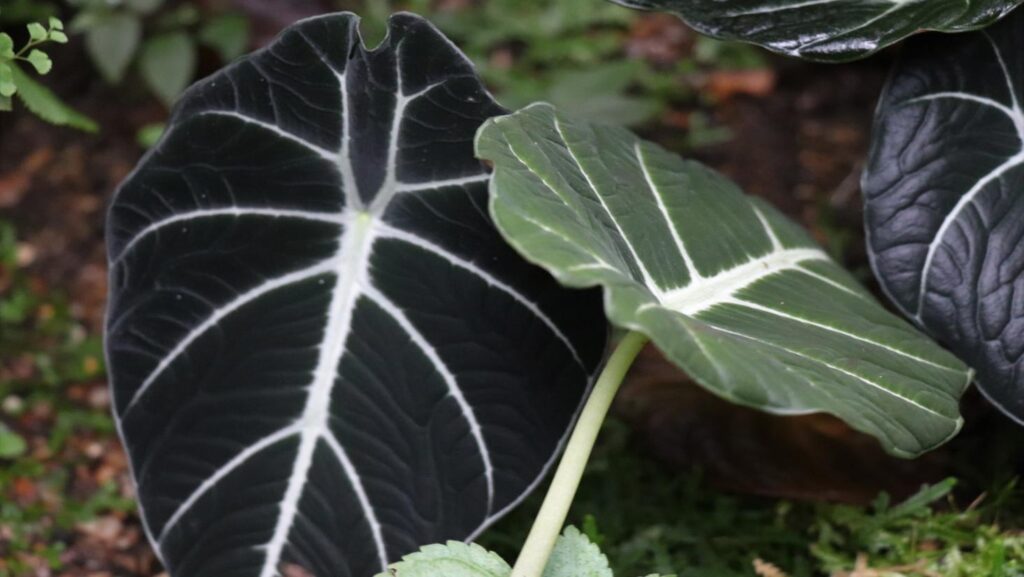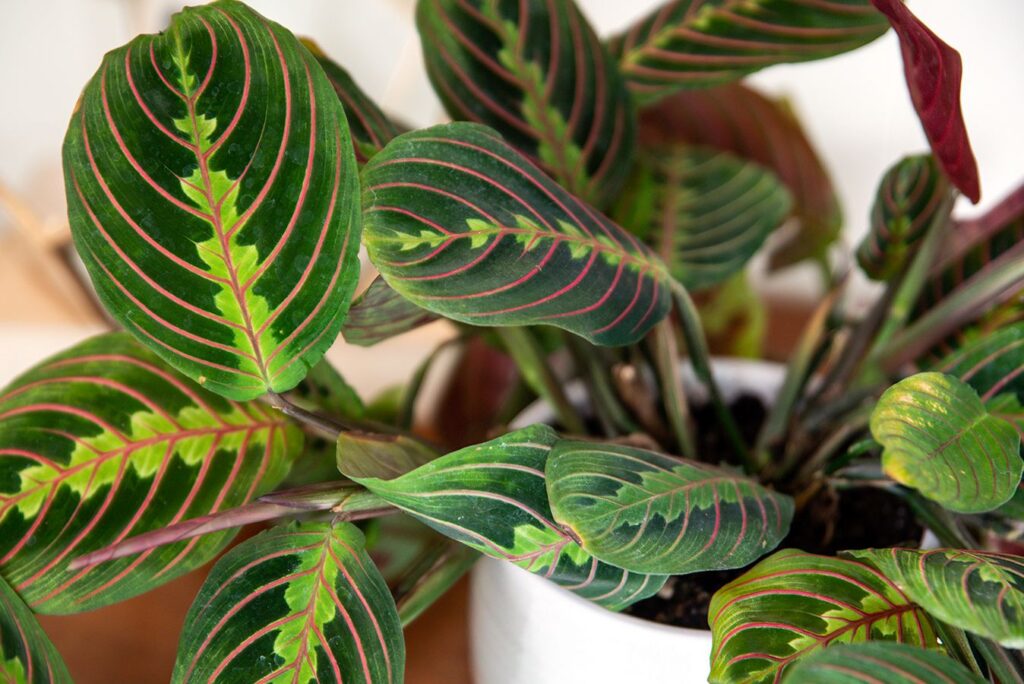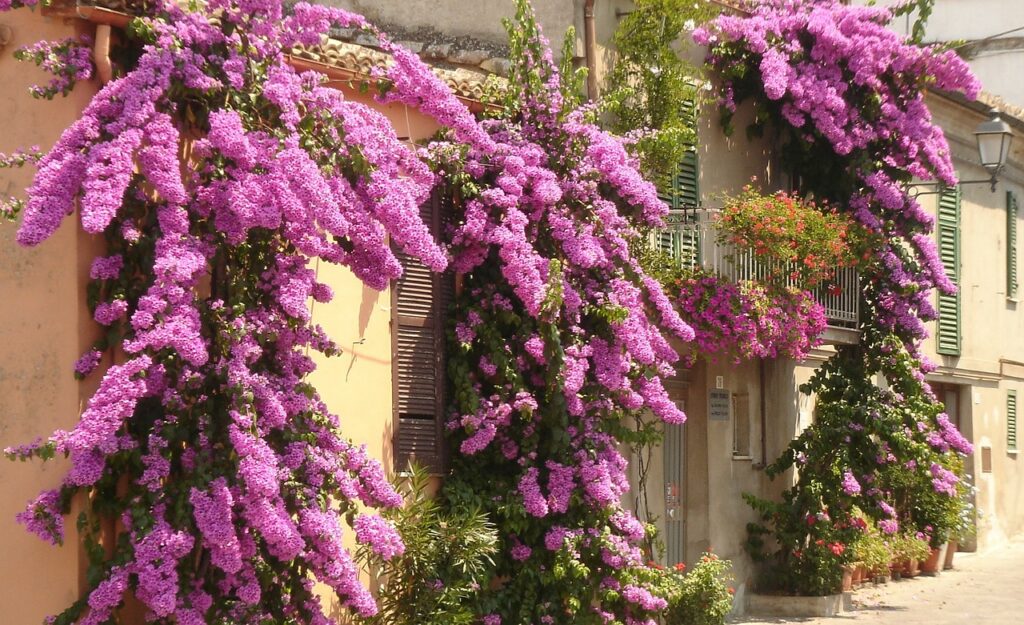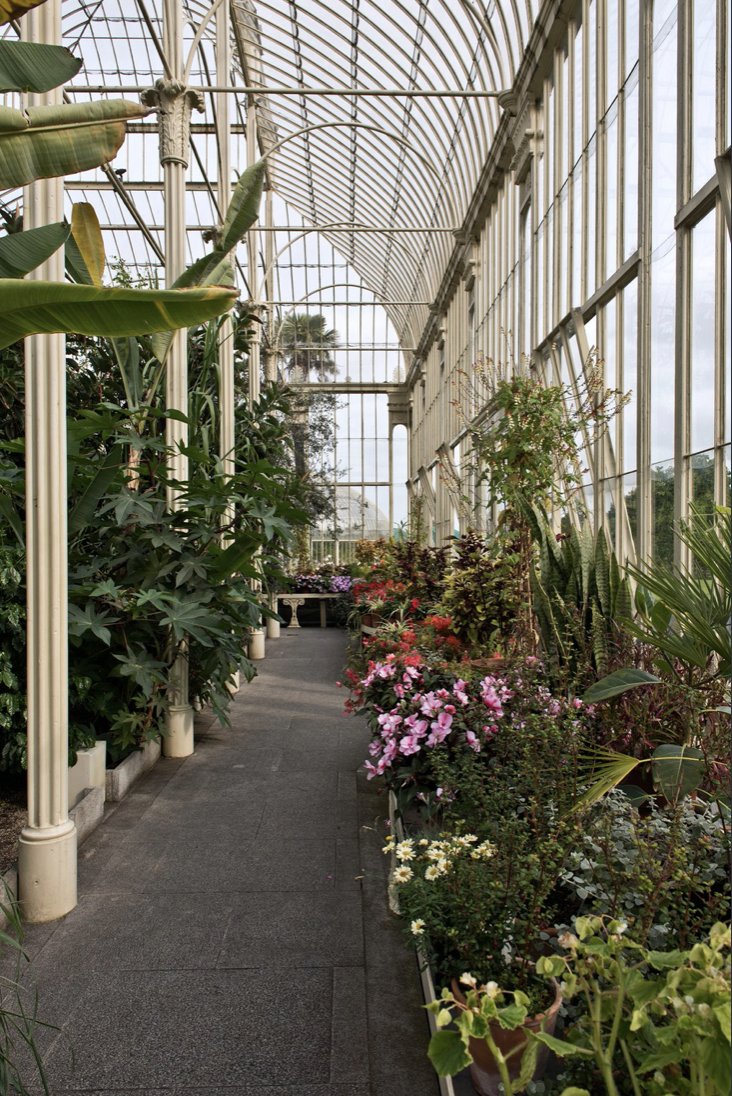There’s nothing like the serenity of a perfectly manicured, yet effortlessly tousled plant display with verdant leaves, spindly vines and soft sunlight streaming through tall conservatory windows. A great way to add visual interest to a display such as this is with vibrant, colorful plants. With contrasting colors to the typical greens of houseplants, these eye-catching tropical plants will add depth and interest to indoor glasshouses large and small.

Alocasia ‘Black velvet’ | With dark velvety leaves, bright white veining and a love of humidity this plant is perfect for a conservatory because of its unique deep green color and preference for steamy-aired locations. Its dark color allows for the plant to absorb and retain sunlight in dark environments like, for example, beneath a forest canopy. The foliage absorbs the light waves while its white veins reflect them. This would make a bold accent plant, especially when nestled among rows of colorful flowers.

Prayer plant (Maranta Leuconeura) | A tropical evergreen plant, this colorful plant resembles a pair of praying hands when its large purple-green and gray-green leaves fold each night, in response to a lack of sunlight, to resemble the interlace of praying hands. Its foliage has red fishbone-pattern veining and a pale underside. This plant grows well in temperate climates with humidity and low to medium light. With bright colors, an interesting pattern and an unusual shape, the prayer plant is an easy addition for any conservatory.

Bougainvillea | This tropical plant comes in a handful of vibrantly colored flowers. From bright yellow to bright pink, this shrubby vine is sure to add color to any space. Its vines have small curved thorns that allow it to be an expeditious climber. This would be a great plant to cover a bland wall or to add flowers around the interior and exterior of the structure. It is best suited for a hot, dry climate which makes it an ideal choice for the conservatory environment. Once the plant is established it can even be drought resistant. Its hardiness and flexibility make it an easy and colorful addition.

